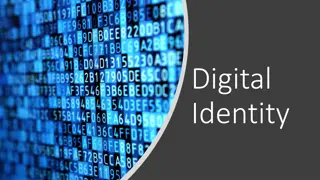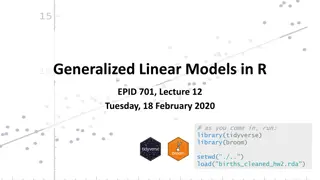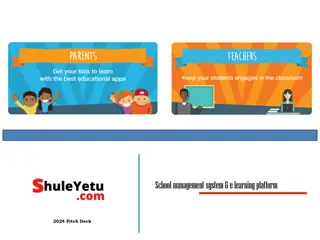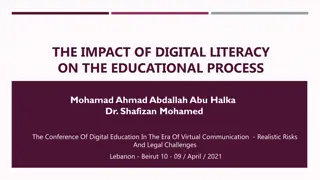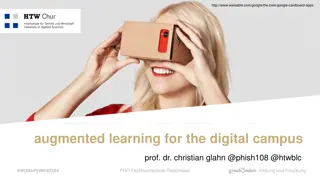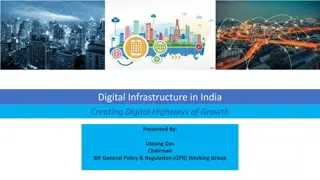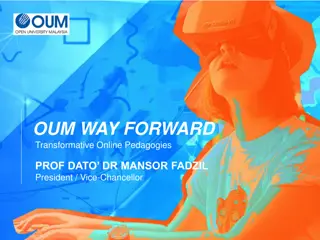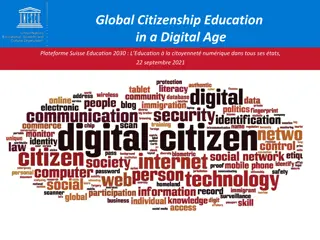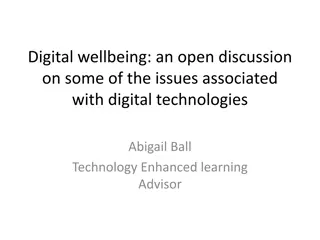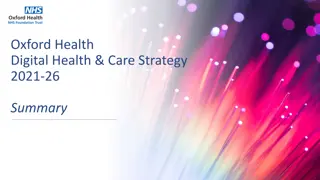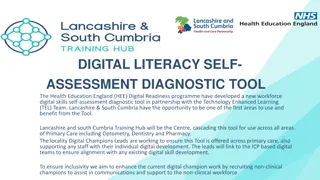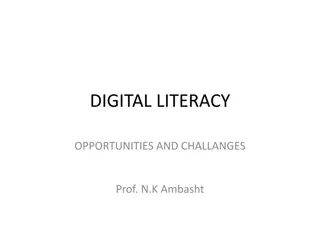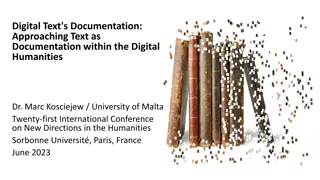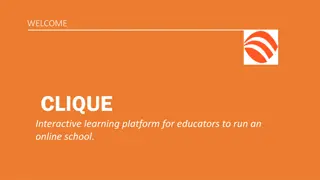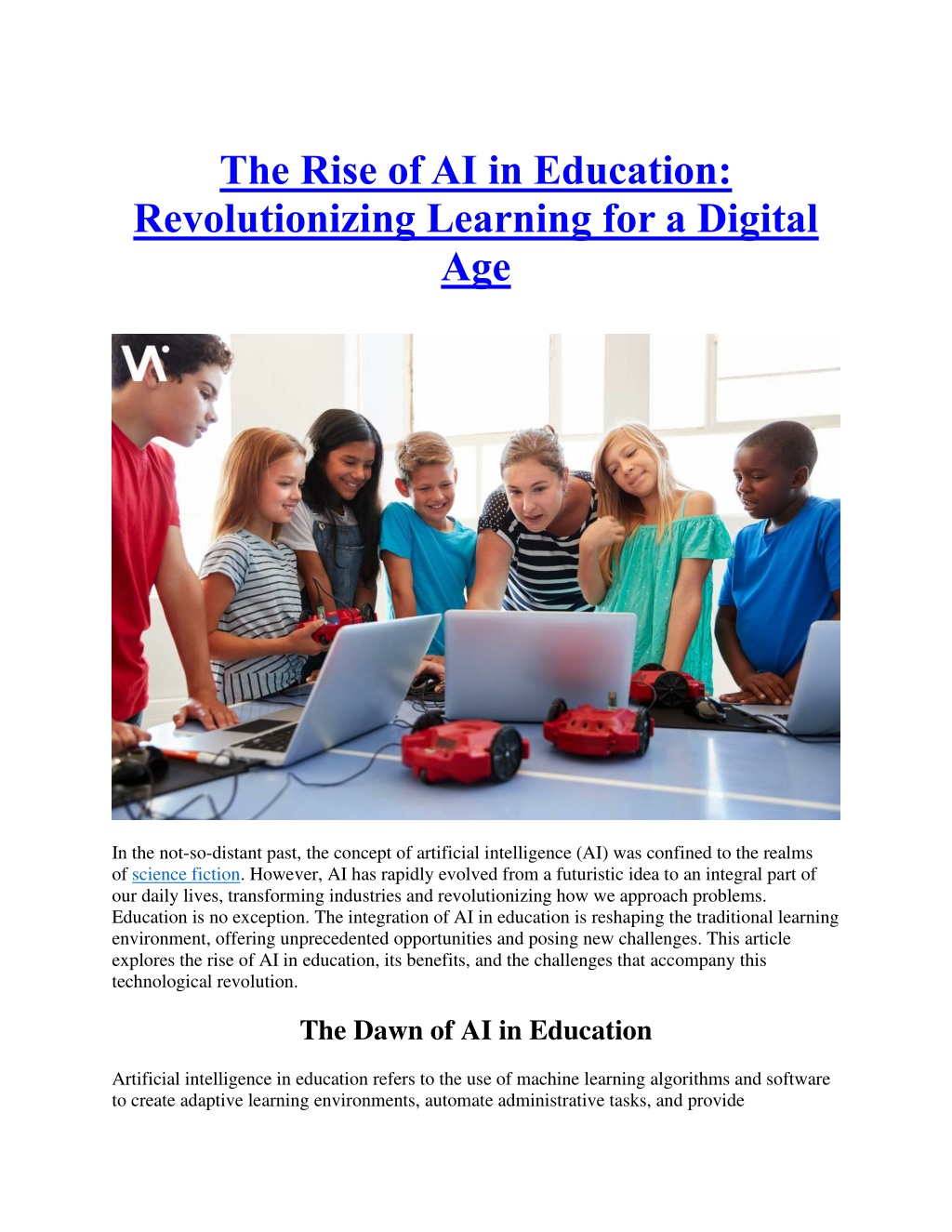
The Rise AI in Education Revolutionizing Learning for a Digital Age
In the not-so-distant past, the concept of artificial intelligence (AI) was confined to the realms of science fiction. However, AI has rapidly evolved from a futuristic idea to an integral part of our daily lives, transforming industries and revoluti
Download Presentation

Please find below an Image/Link to download the presentation.
The content on the website is provided AS IS for your information and personal use only. It may not be sold, licensed, or shared on other websites without obtaining consent from the author. Download presentation by click this link. If you encounter any issues during the download, it is possible that the publisher has removed the file from their server.
E N D
Presentation Transcript
The Rise of AI in Education: Revolutionizing Learning for a Digital Age In the not-so-distant past, the concept of artificial intelligence (AI) was confined to the realms of science fiction. However, AI has rapidly evolved from a futuristic idea to an integral part of our daily lives, transforming industries and revolutionizing how we approach problems. Education is no exception. The integration of AI in education is reshaping the traditional learning environment, offering unprecedented opportunities and posing new challenges. This article explores the rise of AI in education, its benefits, and the challenges that accompany this technological revolution. The Dawn of AI in Education Artificial intelligence in education refers to the use of machine learning algorithms and software to create adaptive learning environments, automate administrative tasks, and provide
personalized learning experiences. The journey of AI in education began with simple computer- based training programs in the 1980s, which evolved into intelligent tutoring systems (ITS) in the 1990s. These systems used AI to adapt to students' learning styles and paces, providing a glimpse into the potential of AI to enhance education. Personalized Learning: Tailoring Education to Individual Needs One of the most significant benefits of AI in education is personalized learning. Traditional classroom settings often struggle to meet the diverse needs of students, with teachers facing the challenge of catering to different learning styles and paces. AI-driven personalized learning systems address this issue by customizing educational content and experiences for each student. Adaptive learning platforms, such as DreamBox, Knewton, and Smart Sparrow, use AI algorithms to analyze students' performance, identify their strengths and weaknesses, and adjust the curriculum accordingly. This personalized approach ensures that students receive the right level of challenge and support, enhancing their learning outcomes. For instance, a student struggling with a particular math concept might receive additional practice problems and explanations, while a student excelling in the same area could move on to more advanced topics. Moreover, AI can provide real-time feedback, helping students understand their mistakes and learn from them immediately. This immediate feedback loop is crucial for effective learning, as it allows students to correct their misunderstandings and build a solid foundation of knowledge. Intelligent Tutoring Systems: Enhancing Learning with Virtual Tutors Intelligent Tutoring Systems (ITS) are another transformative application of AI in education. These systems simulate the experience of having a personal tutor by providing one-on-one instruction and support. ITS can be particularly beneficial in subjects where students often need extra help, such as mathematics and science.
Carnegie Learning's MATHia, for example, is an ITS that uses AI to deliver personalized math instruction. The system continually assesses students' understanding and provides targeted feedback and hints to guide them through problems. Studies have shown that students using MATHia achieve significant improvements in their math skills compared to those in traditional classroom settings. Virtual tutors powered by AI also extend learning opportunities beyond the classroom. Platforms like Duolingo use AI to help students learn new languages by providing interactive lessons, practice exercises, and instant feedback. These virtual tutors can adapt to learners' proficiency levels and learning preferences, making language learning more engaging and effective. Automating Administrative Tasks: Reducing the Burden on Educators AI is not only transforming the way students learn but also revolutionizing the administrative side of education. Educators often spend a significant portion of their time on administrative tasks, such as grading assignments, managing schedules, and handling paperwork. AI-powered tools can automate many of these tasks, freeing up valuable time for teachers to focus on instruction and student support. For instance, AI-based grading systems can efficiently assess multiple-choice tests, essays, and even complex assignments. Automated grading not only saves time but also provides consistent and objective evaluations. Platforms like Gradescope use AI to assist with grading by recognizing patterns in student responses and suggesting grades based on predefined criteria.
AI can also streamline administrative processes, such as student enrollment, attendance tracking, and scheduling. Chatbots and virtual assistants can handle routine inquiries from students and parents, providing instant responses and reducing the workload on administrative staff. These AI-driven solutions improve efficiency and allow educators to dedicate more time to teaching and mentoring. Enhancing Accessibility: Making Education Inclusive AI has the potential to make education more inclusive by addressing the diverse needs of students with disabilities. Assistive technologies powered by AI can provide personalized support and accommodations, ensuring that all students have equal access to education. For example, speech recognition software like Dragon NaturallySpeaking helps students with dyslexia or other learning disabilities by converting spoken language into text. This technology enables students to participate in written assignments and exams more effectively. Similarly, text-to-speech applications can assist students with visual impairments by reading out digital text, making it easier for them to access educational materials. AI-driven tools can also facilitate communication for students with hearing impairments. Real- time captioning and sign language recognition systems use AI to convert spoken language into text or sign language, enabling these students to engage more fully in classroom discussions and activities. Data-Driven Insights: Informing Educational Decision- Making
The integration of AI in education generates vast amounts of data, which can be harnessed to gain valuable insights into student learning and improve educational practices. Learning analytics, powered by AI, analyze data from various sources, such as online learning platforms, assessments, and student interactions, to identify patterns and trends. Educators can use these insights to make informed decisions about curriculum design, instructional strategies, and intervention programs. For example, learning analytics can highlight areas where students are struggling, allowing teachers to adjust their teaching methods or provide additional support. By identifying at-risk students early, schools can implement targeted interventions to prevent academic failure and dropout. AI-driven data analysis can also enhance educational research. Researchers can use AI algorithms to analyze large datasets and uncover hidden correlations, leading to new discoveries and evidence-based practices. This data-driven approach has the potential to revolutionize educational research and drive continuous improvement in teaching and learning. The Challenges of AI in Education While the benefits of AI in education are compelling, its implementation is not without challenges. Addressing these challenges is crucial to ensure that AI is used ethically and effectively to enhance education. Privacy and Security Concerns
One of the primary concerns associated with AI in education is the collection and use of student data. AI systems rely on vast amounts of data to function effectively, raising concerns about data privacy and security. Educational institutions must implement robust data protection measures to safeguard students' personal information and ensure compliance with privacy regulations. Transparent data practices are essential to build trust among students, parents, and educators. Schools should clearly communicate how data is collected, used, and protected, and provide options for students and parents to control their data. Additionally, anonymizing data and using secure storage and transmission methods can help mitigate privacy risks. Bias and Fairness AI algorithms are only as good as the data they are trained on. If the training data contains biases, the AI systems can perpetuate and even amplify these biases, leading to unfair outcomes. For example, biased data in an AI-driven admissions system could result in discriminatory practices, disadvantaging certain groups of students. To address bias and fairness, it is essential to use diverse and representative datasets when training AI models. Regular audits and evaluations of AI systems can help identify and rectify biases. Involving educators, students, and other stakeholders in the development and evaluation of AI tools can also ensure that these systems are fair and equitable. Ethical Considerations
The use of AI in education raises important ethical questions. For instance, the automation of certain tasks, such as grading and assessment, may lead to concerns about the role of teachers and the value of human judgment. It is crucial to strike a balance between leveraging AI for efficiency and maintaining the essential human elements of education, such as empathy, critical thinking, and mentorship. Ethical guidelines and frameworks can help navigate the ethical challenges of AI in education. These guidelines should emphasize the importance of transparency, accountability, and human oversight. Educators and policymakers must work together to establish ethical standards that prioritize the well-being and development of students. Digital Divide The digital divide refers to the gap between those who have access to technology and the internet and those who do not. The integration of AI in education can exacerbate this divide, as students without access to digital devices or reliable internet connections may be left behind. Addressing the digital divide requires a multifaceted approach. Governments, educational institutions, and private sector organizations must collaborate to provide equitable access to technology and connectivity. Initiatives such as providing subsidized devices, expanding internet infrastructure, and offering digital literacy programs can help bridge the gap and ensure that all students can benefit from AI-enhanced education. The Future of AI in Education As AI continues to advance, its impact on education will only grow. The future of AI in education holds exciting possibilities, including more sophisticated personalized learning systems, advanced virtual tutors, and innovative educational technologies. However, realizing the full potential of AI in education requires careful planning, collaboration, and continuous evaluation. Educators, policymakers, technologists, and researchers must work together to address the challenges and harness the benefits of AI for the betterment of education. Conclusion The rise of AI in education is revolutionizing learning, offering personalized experiences, enhancing accessibility, and providing data-driven insights. While challenges such as privacy, bias, and the digital divide must be addressed, the potential of AI to transform education is undeniable. By leveraging AI ethically and responsibly, we can create a more inclusive, effective, and engaging learning environment for students worldwide. Uncover the latest trends and insights with our articles on Visionary Vogues



